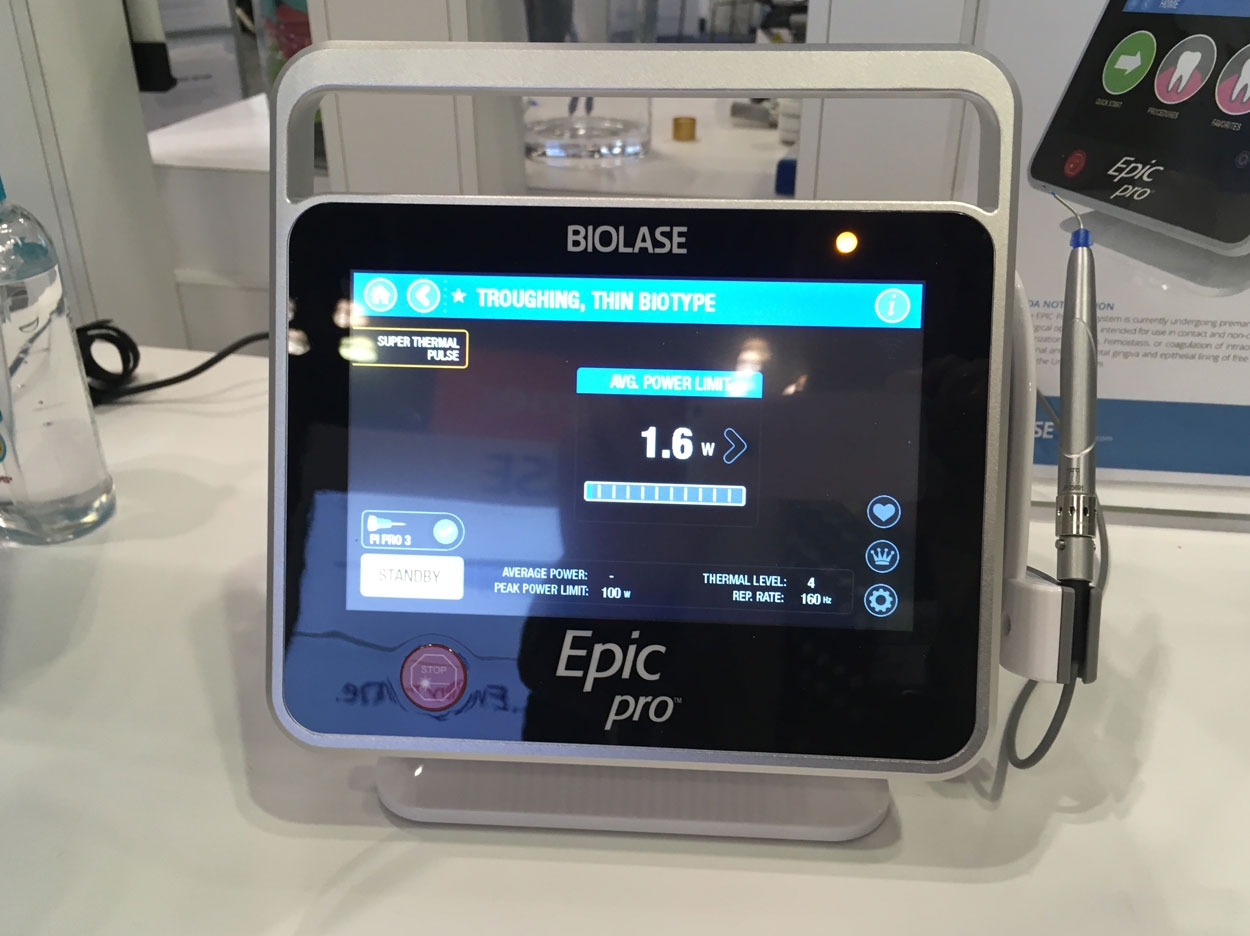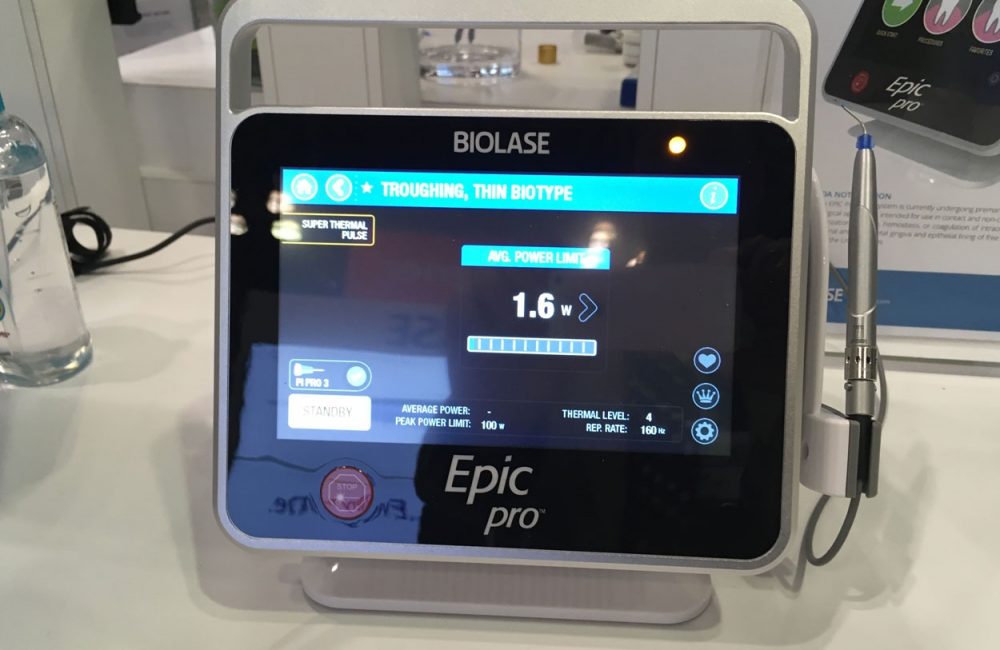
The Biolase Epic Pro can achieve 10 times the peak power of a standard diode laser and up to 3 times the peak power of its closest competitor in short micropulses for top soft-tissue cutting efficiency and safety, according to the company. Biolase also reports that it cuts 4 times faster than a classic diode laser with minimal collateral damage. It is currently undergoing premarket notification review by the US Food and Drug Administration.
In continuous wave mode, the laser converts light energy to thermal power at the tip. The laser energy is adjusted automatically in real time to maintain constant tip temperature for consistent and reliable cutting conditions regardless of speed of movement, issue type, and other factors, Biolase states. Plus, the laser is powered on only about 3% to 5% of the time, which gives the tissue ample time to relax between pulses for a safer and gentler patient experience.
Biolase additionally reports that the Epic Pro provides the deepest and most uniform drag-free cut versus classic diode lasers. Its factory initiated Epic Pro Tips are designed for predictable and reliable tissue cutting as well. Biolase calls it the first tip where initiation material is fused inside the quartz fiber material to create a veneer-like surface on the fiber tip for robust and long-lasting performance. And, its smart tip technology includes a built-in tip integrity indicator to ensure that cutting is consistent, fast, and precise each time.
The Epic Pro’s 7-inch display is larger than any other diode laser’s display as well, Biolase states. Its graphical user interface employs intuitive procedural categories, more than 20 factory presets, and access to favorite settings. A quick start mode enables fast initiation of treatment, with standard and advanced modes for control and flexibility designed to match the practitioner’s skill level. Applications include laser pocket therapy, gingival troughing, aphthous ulcers, implant uncovery, frenectomies, gingivectomies, soft-tissue crown lengthening, excisions for biopsy, and exposure of unerupted teeth.












